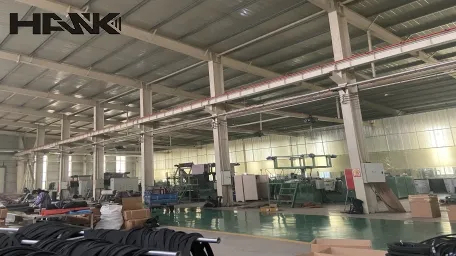- Arabic
- French
- Russian
- Spanish
- Portuguese
- Turkish
- Armenian
- English
- Albanian
- Amharic
- Azerbaijani
- Basque
- Belarusian
- Bengali
- Bosnian
- Bulgarian
- Catalan
- Cebuano
- Corsican
- Croatian
- Czech
- Danish
- Dutch
- Afrikaans
- Esperanto
- Estonian
- Finnish
- Frisian
- Galician
- Georgian
- German
- Greek
- Gujarati
- Haitian Creole
- hausa
- hawaiian
- Hebrew
- Hindi
- Miao
- Hungarian
- Icelandic
- igbo
- Indonesian
- irish
- Italian
- Japanese
- Javanese
- Kannada
- kazakh
- Khmer
- Rwandese
- Korean
- Kurdish
- Kyrgyz
- Lao
- Latin
- Latvian
- Lithuanian
- Luxembourgish
- Macedonian
- Malgashi
- Malay
- Malayalam
- Maltese
- Maori
- Marathi
- Mongolian
- Myanmar
- Nepali
- Norwegian
- Norwegian
- Occitan
- Pashto
- Persian
- Polish
- Punjabi
- Romanian
- Samoan
- Scottish Gaelic
- Serbian
- Sesotho
- Shona
- Sindhi
- Sinhala
- Slovak
- Slovenian
- Somali
- Sundanese
- Swahili
- Swedish
- Tagalog
- Tajik
- Tamil
- Tatar
- Telugu
- Thai
- Turkmen
- Ukrainian
- Urdu
- Uighur
- Uzbek
- Vietnamese
- Welsh
- Bantu
- Yiddish
- Yoruba
- Zulu
नोभ . 02, 2024 11:50 Back to list
gear timing belt
Understanding Gear and Timing Belts Key Components in Engine Performance
In the intricate world of automotive engineering, gear and timing belts play crucial roles in ensuring smooth operation and optimal performance of engines. These components, while often overlooked, are vital in the synchronization of various engine functions that ultimately lead to efficient vehicle operation.
What are Gear Belts?
Gear belts are often used in various machinery applications, including automotive engines. They transmit power between gears, ensuring that different components work in harmony. While there are various types of gear belts, the most common include V-belts, timing belts, and serpentine belts. Each type has its unique design and application, but they all share a common purpose to facilitate the transfer of rotational energy and maintain synchronization between engine components.
The Importance of Timing Belts
Timing belts, specifically, are a type of belt that drives the camshaft(s) in an internal combustion engine. This is critical because the camshaft controls the opening and closing of the engine's valves. If the timing belt fails or becomes misaligned, it can lead to serious engine damage due to incorrect timing of the valve movements, potentially resulting in a catastrophic failure that could necessitate extensive and costly repairs.
gear timing belt

Timing belts are often made from high-quality rubber with fiber reinforcement for strength and flexibility. They feature teeth along their inner surface, which mesh with gearwheels, ensuring precise movement. Regular maintenance is essential, as timing belts typically need to be replaced every 60,000 to 100,000 miles, depending on the vehicle manufacturer’s specifications. Neglecting to replace a worn timing belt can lead to engine failure, underscoring the importance of understanding this vital component.
Gear and Timing Belt Synchronization
The synchronization afforded by gear and timing belts is not just about mechanical function; it's also about performance and efficiency. When these belts are functioning correctly, they help to optimize fuel consumption and reduce emissions, contributing to overall vehicle efficiency. For instance, in performance-driven engines, precise gear and timing mechanisms allow for better ignition timing, which can enhance horsepower and drivability.
Moreover, modern engines often utilize variable valve timing (VVT) technology, which relies heavily on accurate timing belt function. VVT systems adjust the timing of valve openings and closings based on engine speed and load, which can lead to improved performance and economic fuel usage.
Conclusion
In summary, gear and timing belts are not just simple components of an engine; they are critical elements that ensure the overall functionality and performance of a vehicle. Regular inspection and timely replacement of these belts can prevent costly repairs and enhance engine performance. As technology evolves, the designs of these belts continue to improve, but their fundamental role in powering an engine remains unchanged. For any vehicle owner, understanding the importance of these components is essential for maintaining optimal performance and longevity of their automotive investment. Recognizing when to service or replace gear and timing belts will ensure that your vehicle runs smoothly and efficiently for years to come.
-
Korean Auto Parts Timing Belt 24312-37500 For Hyundai/Kia
NewsMar.07,2025
-
7PK2300 90916-T2024 RIBBED BELT POLY V BELT PK BELT
NewsMar.07,2025
-
Chinese Auto Belt Factory 310-2M-22 For BMW/Mercedes-Benz
NewsMar.07,2025
-
Chinese Auto Belt Factory 310-2M-22 For BMW/Mercedes-Benz
NewsMar.07,2025
-
90916-02660 PK Belt 6PK1680 For Toyota
NewsMar.07,2025
-
drive belt serpentine belt
NewsMar.07,2025

